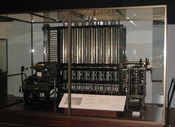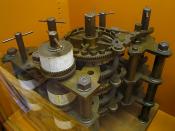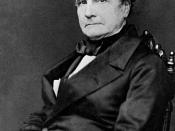Charles Babbage may have spent his life in vain, trying to make a machine considered by most of his friends to be ridiculous. 150 years ago, Babbage drew hundreds of drawings projecting the fundamentals on which today's computers are founded. But the technology was not there to meet his dreams. He was born on December 26, 1791, in Totnes, Devonshire, England. As a child he was always interested about the mechanics of everything and in the supernatural. He reportedly once tried to prove the existence of the devil by making a circle in his own blood on the floor and reciting the Lord's Prayer backward. In college, he formed a ghost club dedicated to verifying the existence of the supernatural. When in Trinity College in Cambridge, Charles carried out childish pranks and rebelled because of the boredom he felt from knowing more than his instructors. Despite this, however, he was on his way to understanding the advanced theories of mathematics and even formed an Analytical Society to present and discuss original papers on mathematics and to interest people in translating the works of several foreign mathematicians into English.
His studies also led him to a critical study of logarithmic tables and was constantly reporting errors in them. During this analysis, it occurred to him that all these tables could be calculated by machinery. He was convinced that it was possible to construct a machine that would be able to compute by successive differences and to even print out the results. (He conceived of this 50 years before type-setting machines or typewriters were invented.)
In 1814, the age of 23, Charles married 22-year-old Georgina Whitmore. Georgina would have eight children in thirteen years, of which only three sons would survive to maturity. Babbage really took no interest in raising his children.


